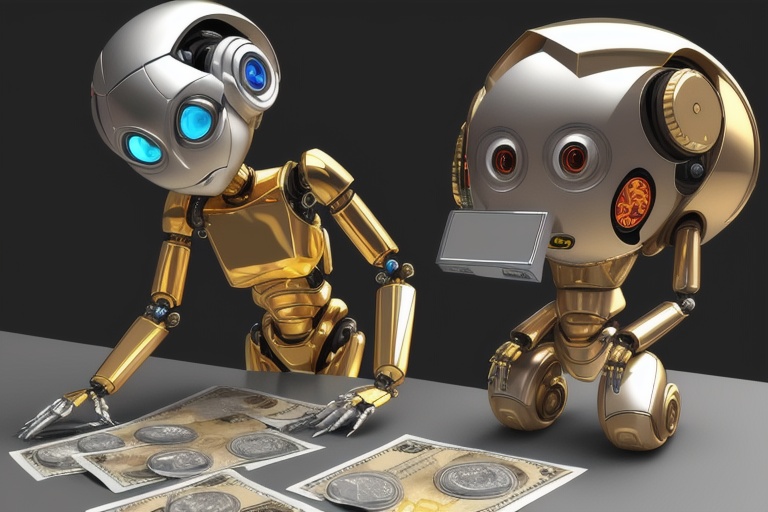Artificial intelligence (AI) has captured the imagination of scientists, writers, and thinkers for generations. Its evolution over time offers a fascinating glimpse into the relentless pursuit of human ingenuity, striving to create machines that can replicate our own cognitive abilities. Each breakthrough in AI brings us closer to unraveling the complex tapestry of the human mind. This article will take you on a journey through the epochs that have defined AI, shedding light on the milestones that have shaped its trajectory from speculative fiction to concrete reality.
Artificial intelligence (AI) has captured the imagination of scientists, writers, and thinkers for generations. Its evolution over time offers a fascinating glimpse into the relentless pursuit of human ingenuity, striving to create machines that can replicate our own cognitive abilities. Each breakthrough in AI brings us closer to unraveling the complex tapestry of the human mind. This article will take you on a journey through the epochs that have defined AI, shedding light on the milestones that have shaped its trajectory from speculative fiction to concrete reality.
The Dawn of AI: Early 20th Century
At the beginning of the 20th century, the seeds of artificial intelligence were sown as inventors, inspired by folklore and mythology, aimed to build mechanical beings that mimicked life itself. The term "automaton" speaks to this aspiration, derived from an ancient Greek word for a self-operating machine. The most illustrious of these early creations was perhaps Leonardo da Vinci's knight, an armored figure engineered in the late 15th century to perform intricate human-like movements.
As these mechanical marvels evolved, the term "robot" first entered our lexicon in 1921 with Karel Čapek’s play "Rossum's Universal Robots." In line with this, Japan introduced Gakutensoku in 1929, marking Asia's foray into robotic innovation. Meanwhile, literature and cinema churned out narratives centered on artificial beings, which fueled scientific dreams of replicating human intellect. Edmund Callis Berkley's "Giant Brains, or Machines that Think," published in 1949, explored the parallels between computers and the human brain, setting the stage for the modern AI movement.
The Formal Birth of AI: 1950-1956
The formal birth of AI spans the mid-20th century when the term entered academic parlance, thanks primarily to Alan Turing's seminal work, "Computer Machinery and Intelligence." Turing contemplated the question of machine intelligence and devised the Turing Test as a measure of a machine's ability to exhibit human-like intelligence. Simultaneously, Arthur Samuel’s checkers program showed that computers could learn from experience, foreshadowing the potential of machine learning.
In 1955, John McCarthy’s call for a conference at Dartmouth College coalesced the burgeoning interest in AI, proposing that "every aspect of learning or any other feature of intelligence can in principle be so precisely described that a machine can be made to simulate it." This watershed event saw the first use of "artificial intelligence" to describe this new field of study.
The Golden Years and the Ensuing Challenges: 1957-1979
The following decades witnessed a surge in interest and investment. Programming languages like LISP, created by John McCarthy, advanced the building blocks of AI, some of which remain relevant today. Pop culture embraced the concept, reflecting society's fascination with intelligent machines.
The euphoria, however, was not to last. The 1970s posed significant hurdles when the U.S. Government curtailed funding for AI research. This led to a period known as the "AI winter," characterized by skepticism and reduced financial support, testing the resilience of the field.
The Modern Reawakening
Despite these setbacks, the relentless dedication of researchers and advancements in computational power contributed to a renaissance in AI development. This modern era has seen AI systems beat humans at complex games like Go, recognize objects with unprecedented accuracy, and interpret human language with nuanced understanding. Recent developments in neural networks, a subfield of machine learning, have been pivotal in these breakthroughs, pushing AI capabilities to new heights.
Nevertheless, these innovations come with important ethical and regulatory questions. Ensuring the responsible development and deployment of AI technologies has become a pressing priority, lest we lose control over the digital genies we have unleashed.
AI in Our Lives and Looking to the Future
Today, AI permeates various aspects of our lives, with businesses harnessing its power to transform customer experiences, and technologies like robotics and autonomous vehicles inching closer to widespread adoption. As we venture into the future, AI promises new frontiers, but it also demands that we forge a path that aligns with our societal values and collective well-being.
AI's journey from antiquity to the modern day reflects the human desire to not just understand but to recreate the marvel of conscious thought. Grasping its history allows us to appreciate the strides made and the challenges ahead. Looking forward, we can choose to steer this technology towards a future where AI not only augments our capacities but also enriches the human experience.
Understanding the history and development of AI is crucial. As the field continues to advance at a breathtaking pace, we must harness this powerful tool with care and consideration, mindful of the societal implications and the ethical standards we uphold. With responsible stewardship, the evolution of AI will continue to be one of humanity's most compelling adventures, promising a future as wondrous as the minds that dream of it.
Information for this article was gathered from the following source.




